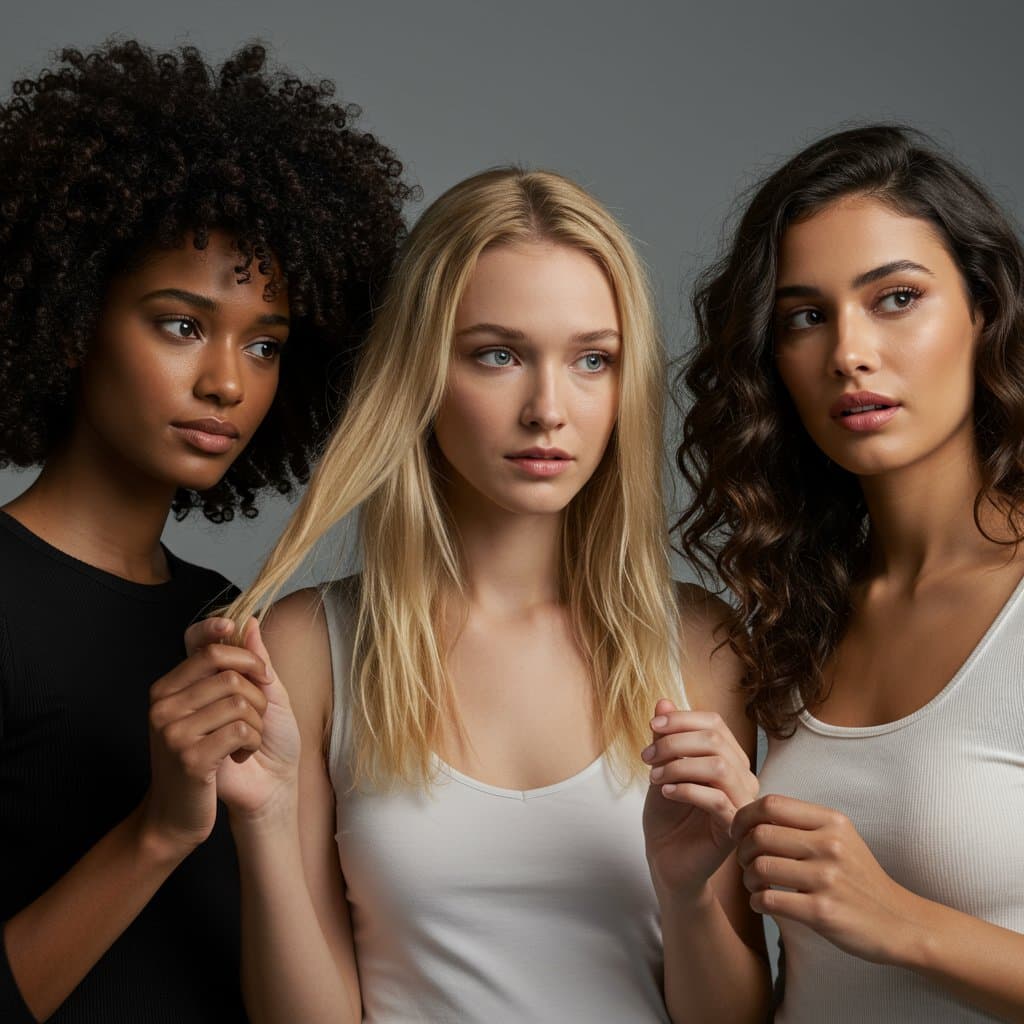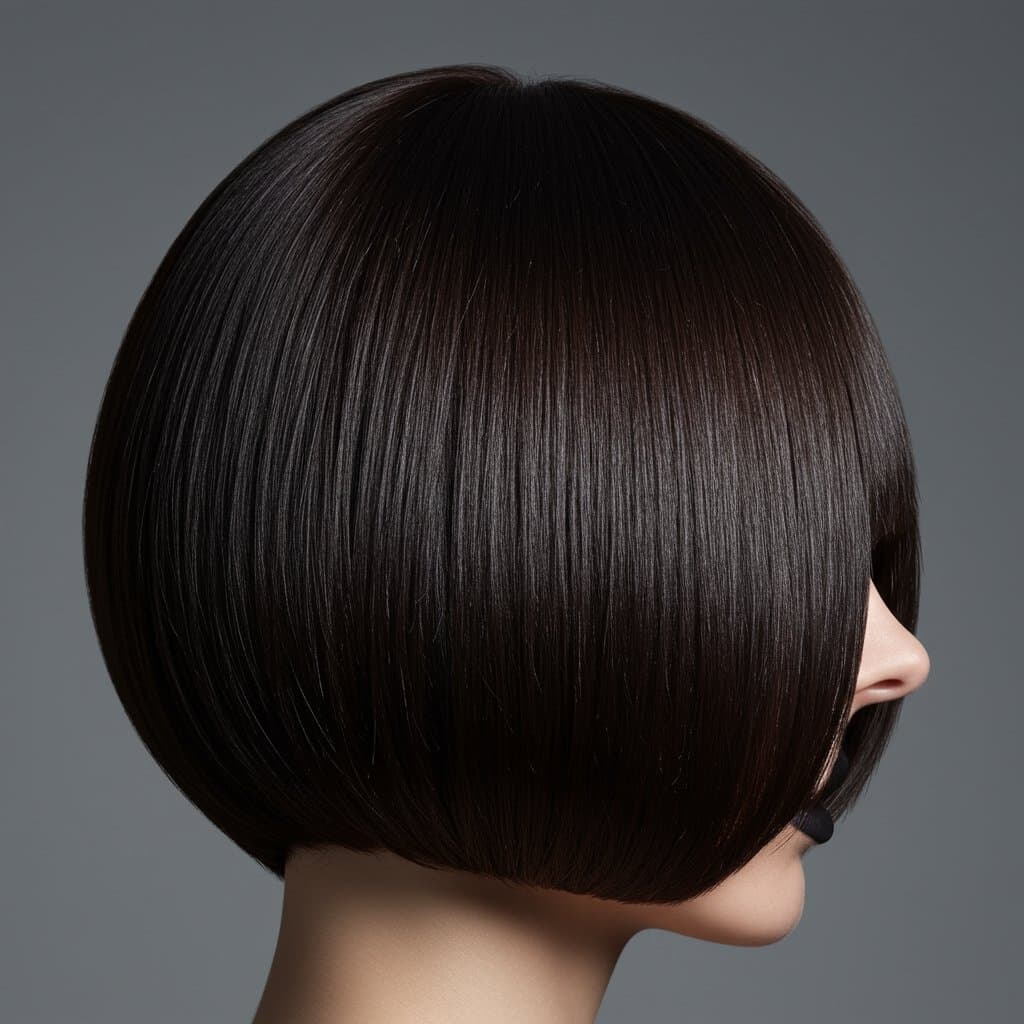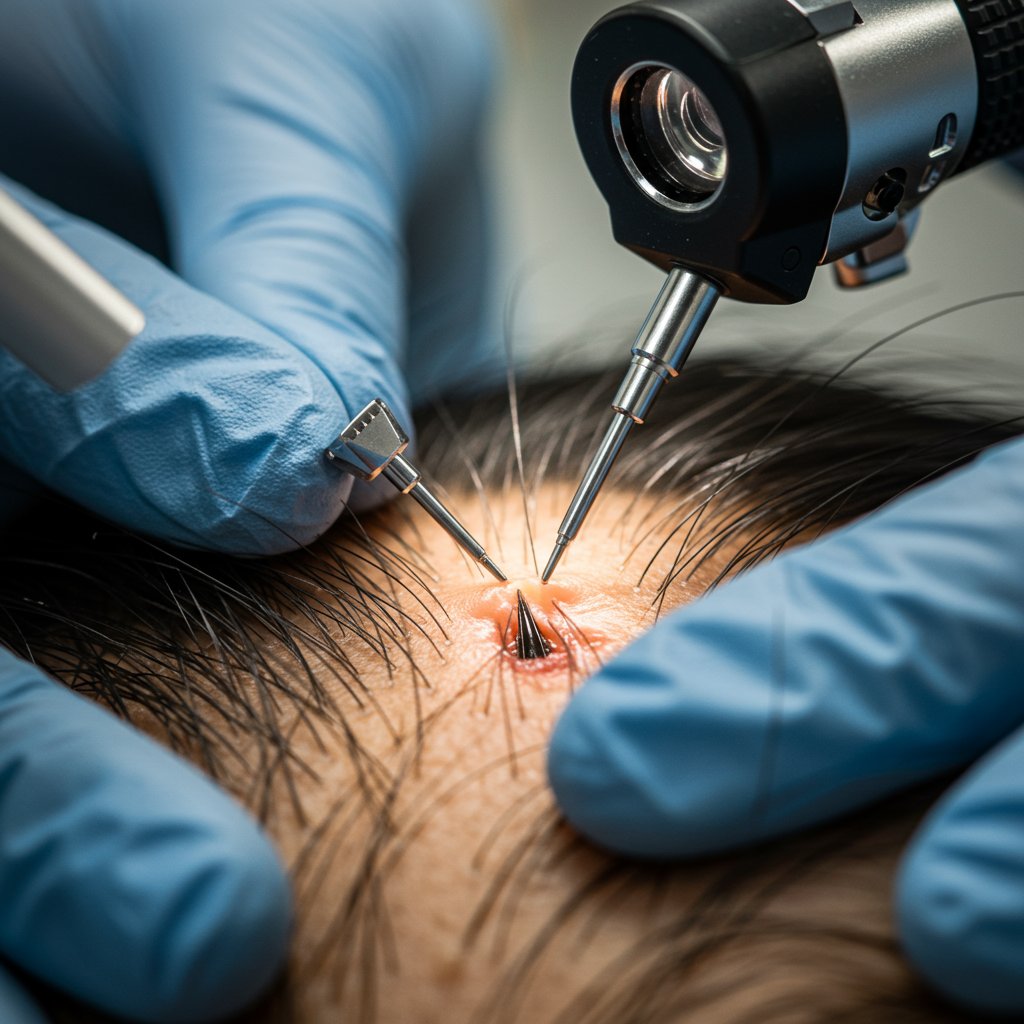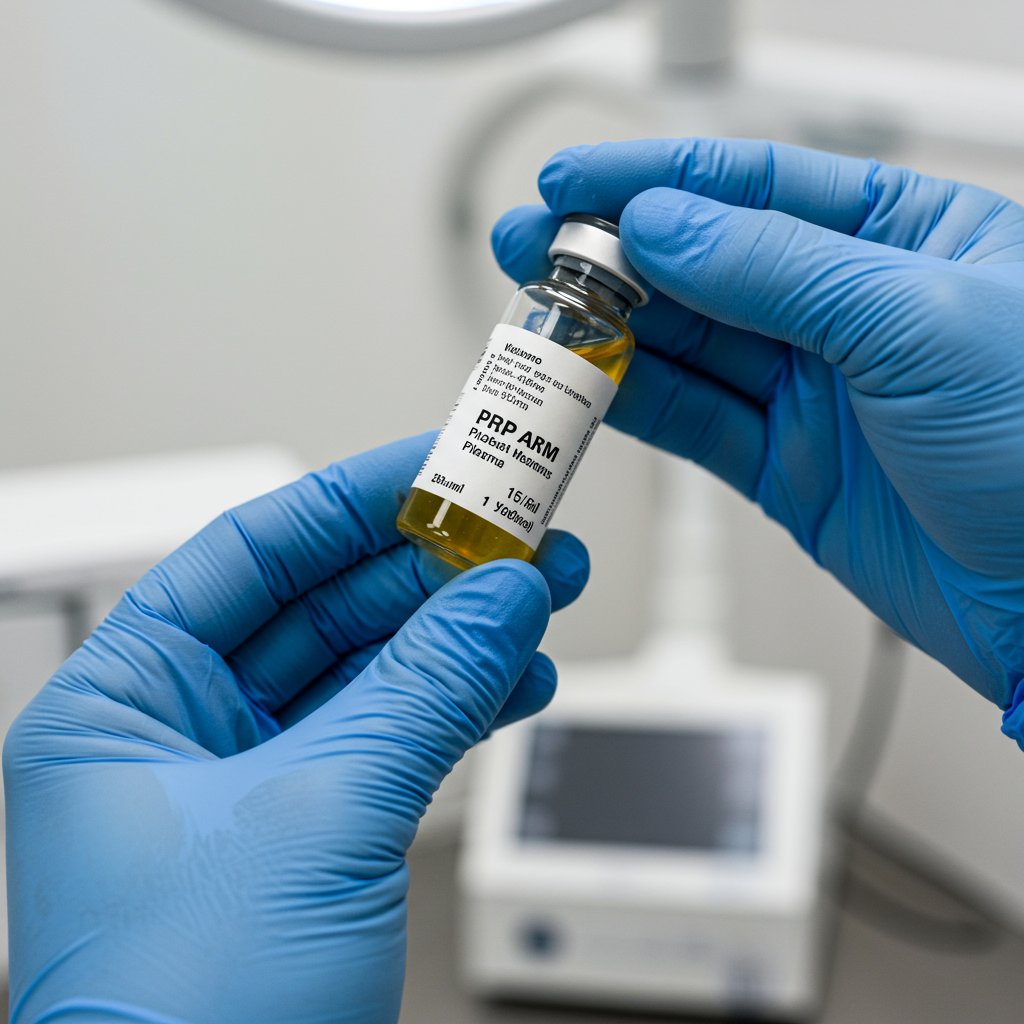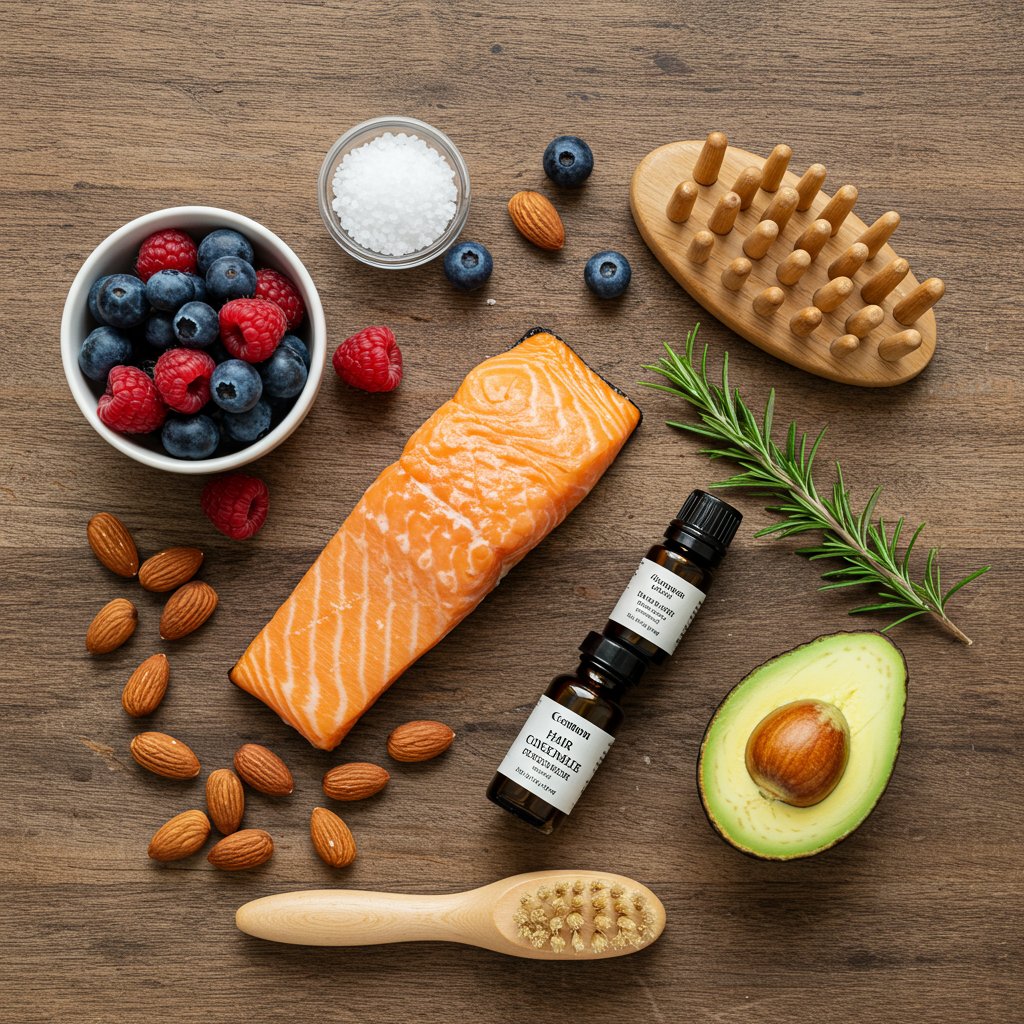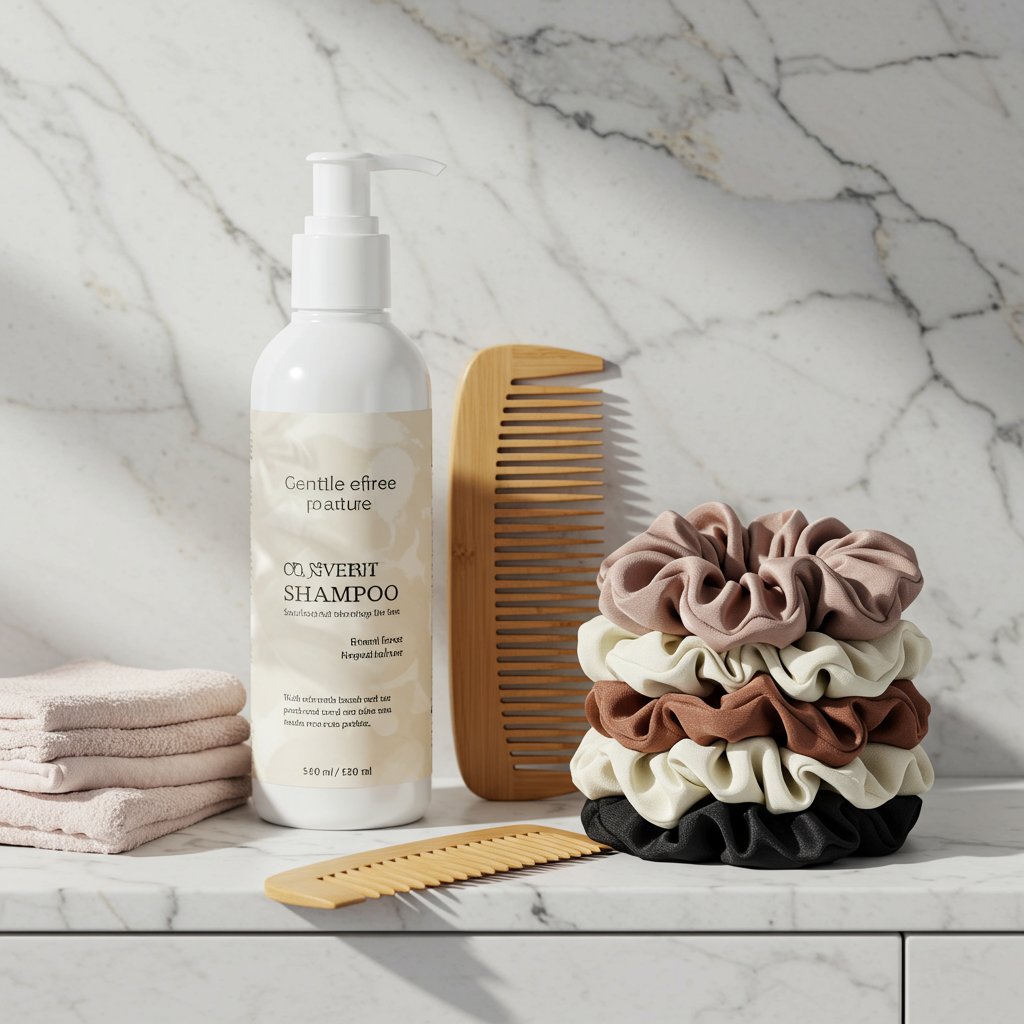Your Compass for Navigating Hair Loss
Hair is intrinsically linked to our identity, self-expression, and confidence. So, when you begin to notice more strands in your brush or a change in your hairline, the experience can be deeply personal and often distressing. You are not alone. Millions of people worldwide are navigating hair loss, a complex issue with a wide spectrum of causes and an equally broad range of emotional responses. This comprehensive guide is designed to be your compass, helping you understand the 'why' behind hair thinning, explore the most effective treatments available, and find the emotional support needed to reclaim your sense of self throughout the journey.

Understanding the multifaceted nature of hair loss is the first step toward empowerment. It’s a condition that doesn't discriminate, affecting individuals of all ages, genders, and backgrounds. Whether your hair loss is sudden or gradual, temporary or long-term, knowledge is power. We will delve into the science behind hair shedding, from genetic predispositions to lifestyle factors, and illuminate the path forward. This journey is not just about hair regrowth; it's about holistic well-being, fostering resilience, and learning to feel confident and beautiful in your own skin, with or without a full head of hair.
In the following sections, we will explore the landscape of hair loss solutions—from clinical interventions confirmed by science to supportive salon services that can make an immediate difference in how you look and feel. We'll also address the crucial, yet often overlooked, psychological impact of hair loss and offer strategies for coping and building a strong support network. Your journey with hair health is unique, and this guide aims to provide you with the clarity and resources to navigate it with grace and confidence.
Understanding the 'Why': Common Causes of Hair Loss
The first step in any effective hair loss strategy is diagnosis. Identifying the root cause is critical because treatment is not one-size-fits-all. Hair loss, medically known as alopecia, can stem from a variety of factors, each requiring a different approach. A consultation with a dermatologist or a certified trichologist is the best way to get a precise diagnosis, but understanding the most common culprits can provide valuable insight and direction.
Androgenetic Alopecia (Genetic Hair Loss)
This is the most prevalent cause of hair loss globally, affecting both men (male-pattern baldness) and women (female-pattern hair loss). It's driven by a genetic sensitivity to dihydrotestosterone (DHT), a byproduct of testosterone. In susceptible individuals, DHT shrinks hair follicles, causing them to produce shorter, finer hairs until they eventually stop producing hair altogether. In men, it typically presents as a receding hairline and thinning at the crown. In women, it usually manifests as diffuse thinning across the top of the scalp, often noticed as a widening part.
Telogen Effluvium (Stress-Related Shedding)
Have you ever experienced a period of intense shedding a few months after a major life event? This is likely Telogen Effluvium. It occurs when a significant stressor—such as major surgery, childbirth, extreme weight loss, high fever, or severe emotional distress—pushes a large number of hair follicles into the resting (telogen) phase simultaneously. A few months later, these hairs shed all at once. The good news is that this type of hair loss is usually temporary, and the hair typically grows back once the underlying stressor is resolved.
Alopecia Areata (Autoimmune Condition)
Alopecia Areata is an autoimmune disease where the body's immune system mistakenly attacks its own hair follicles, leading to hair loss. It often appears as small, round, smooth patches of baldness on the scalp but can affect hair anywhere on the body. The course of the disease is unpredictable; hair may grow back on its own and then fall out again, or the hair loss can be more extensive. While the exact cause is unknown, it's believed to involve a combination of genetic and environmental factors.
Nutritional Deficiencies & Lifestyle Factors
Your hair is a barometer of your internal health. Deficiencies in key nutrients like iron, zinc, vitamin D, and B vitamins can significantly impact hair growth and lead to increased shedding. Similarly, lifestyle choices play a huge role. Chronic stress, poor diet, smoking, and lack of sleep can all disrupt the hair growth cycle. Traction alopecia, another form of hair loss, is caused by persistent pulling on the hair follicles from tight hairstyles like ponytails, braids, or extensions.
The Medical Route: Clinical Treatments for Hair Loss
Once a proper diagnosis is made, a medical professional can recommend a variety of clinical treatments designed to slow hair loss and, in some cases, stimulate regrowth. These scientifically-backed options have helped countless individuals manage their condition effectively. It's important to approach these treatments with realistic expectations and under the guidance of a healthcare provider, as results can vary and may require consistent, long-term use.
Topical Treatments: Minoxidil and Beyond
Minoxidil (commonly known by the brand name Rogaine) is an FDA-approved over-the-counter topical treatment for androgenetic alopecia. Available in foam or liquid form, it's applied directly to the scalp to prolong the anagen (growth) phase of the hair cycle and can help increase hair density. While its exact mechanism isn't fully understood, it's believed to work by increasing blood flow to the follicles. Other topical solutions may include prescription-strength retinoids or ketoconazole shampoos, which can help reduce scalp inflammation.
Oral Medications: Finasteride and Spironolactone
For more advanced cases of androgenetic alopecia, oral medications may be prescribed. Finasteride (Propecia) is an FDA-approved pill for men that works by blocking the conversion of testosterone to DHT, the hormone responsible for shrinking follicles. For women, particularly those with hormonal imbalances like PCOS, an anti-androgen medication called Spironolactone may be prescribed off-label to counteract the effects of androgens on the hair follicles. These medications require a prescription and ongoing monitoring by a doctor due to potential side effects.
Advanced Procedures: PRP and Laser Therapy
For those seeking more advanced interventions, Platelet-Rich Plasma (PRP) therapy and Low-Level Laser Therapy (LLLT) are gaining popularity. PRP therapy involves drawing a small amount of the patient's blood, processing it to concentrate the platelets, and then injecting this plasma into the scalp. The growth factors in the platelets are thought to stimulate dormant hair follicles. LLLT uses red light therapy, delivered through caps, combs, or headbands, to stimulate cellular activity in the follicles, potentially encouraging hair growth. These treatments are often used in conjunction with other therapies for enhanced results.
The Salon's Role: Professional Solutions and Support
While medical professionals diagnose and treat the underlying causes of hair loss, experienced stylists and professional salons are on the front lines, providing practical solutions and invaluable emotional support. A knowledgeable stylist can be a key ally in your journey, helping you look and feel your best while you navigate treatment. They offer a safe space to discuss your concerns and can provide immediate, confidence-boosting results through specialized services.
Scalp Health Treatments and Exfoliation
A healthy scalp is the foundation for healthy hair. Professional salons offer specialized scalp treatments that can create an optimal environment for hair growth. These 'scalp facials' often involve deep cleansing to remove product buildup, sebum, and dead skin cells that can clog follicles. Exfoliating treatments with ingredients like salicylic acid or gentle scrubs, followed by nourishing serums containing peptides and antioxidants, can improve circulation, reduce inflammation, and support the function of your hair follicles.
Volumizing Haircuts and Styling Techniques
A strategic haircut can make a world of difference for thinning hair. An experienced stylist knows how to create the illusion of volume and density. This might involve adding soft layers to remove weight, opting for a shorter, blunt cut to make ends appear thicker, or changing your part to conceal areas of thinning. They can also teach you at-home styling techniques—such as blow-drying your hair upside down or using specific volumizing products like mousses and root lifters—to maximize fullness day-to-day.
High-Quality Hair Systems and Extensions
For those seeking immediate and significant coverage, modern hair solutions are more realistic and comfortable than ever. High-quality extensions can be strategically placed to add volume and length to thinning hair. For more extensive loss, custom hair systems, toppers, or wigs made from human hair offer a completely natural-looking solution. A certified specialist can help you choose the right option, ensure a perfect color match and cut, and teach you proper care to maintain a seamless, undetectable look.
Holistic & Natural Approaches to Hair Health
In conjunction with medical and salon-based treatments, a holistic approach that nurtures your body from the inside out can significantly support hair health. These natural strategies focus on creating a balanced internal environment, reducing inflammation, and providing the essential building blocks your follicles need to thrive. Integrating these habits into your daily life can complement other treatments and promote overall well-being.
The Power of a Balanced Diet
What you eat directly impacts your hair. Ensure your diet is rich in proteins (the building blocks of hair), iron (to prevent anemia-related shedding), zinc (for hair tissue growth and repair), and omega-3 fatty acids (to reduce inflammation). Incorporate foods like salmon, eggs, spinach, avocados, nuts, and seeds. Biotin, a B-vitamin, is also crucial for keratin production. A diet full of colorful fruits and vegetables provides the antioxidants needed to combat oxidative stress, which can damage hair follicles.
Essential Oils and Scalp Massage
Certain essential oils have been studied for their potential to stimulate hair growth. Rosemary oil, for example, has shown promise comparable to 2% minoxidil in some studies. Peppermint oil can increase circulation to the scalp, and lavender oil has calming properties. Always dilute essential oils with a carrier oil like coconut or jojoba oil before applying. Combine this with a gentle scalp massage to further boost blood flow, relieve tension, and enhance the absorption of the oils, turning your routine into a relaxing, therapeutic ritual.
Stress Management Techniques
Since stress is a major trigger for hair loss (Telogen Effluvium), managing it is non-negotiable for hair health. Chronic stress elevates cortisol levels, which can disrupt the hair growth cycle. Incorporate stress-reducing practices into your daily life. This could include mindfulness meditation, yoga, deep breathing exercises, or simply spending time in nature. Prioritizing adequate sleep is also critical, as this is when your body undergoes its most significant repair and regeneration processes.
The Emotional Journey: Coping with the Psychological Impact
The emotional toll of hair loss is profound and should never be underestimated. It can affect self-esteem, social confidence, and overall mental health. Acknowledging and addressing these feelings is as important as treating the physical symptoms. Navigating this emotional journey requires self-compassion, a strong support system, and a shift in perspective.
Acknowledging Your Feelings
It is perfectly normal to feel sadness, anger, frustration, or anxiety about hair loss. The first step is to give yourself permission to feel these emotions without judgment. Suppressing them can lead to greater distress. Consider journaling to process your thoughts or speaking with a trusted friend. Acknowledging the grief associated with this change is a crucial part of the healing process. Your feelings are valid, and you deserve the space to experience them.
Finding Your Support System
Connecting with others who understand what you're going through can be incredibly healing. Seek out online forums or local support groups for people with alopecia or hair loss. Sharing experiences and advice can reduce feelings of isolation. Additionally, consider speaking with a mental health professional. A therapist can provide you with coping strategies, help you work through issues of self-image, and offer a safe, confidential space to talk.
Redefining Beauty and Confidence
Your hair is a part of you, but it does not define your worth or beauty. This period can be an opportunity to explore other aspects of your identity and find new ways to express yourself. Experiment with accessories like beautiful scarves, hats, or statement jewelry. Focus on aspects of yourself that you love, whether it's your kind heart, your sharp wit, or your artistic talent. Confidence comes from within, and this journey can be a powerful catalyst for cultivating a deeper, more resilient sense of self-worth that isn't dependent on your appearance.
Practical Tips for Daily Hair Care and Prevention
How you care for your hair daily can significantly impact its health and resilience, especially when it's already in a fragile state. Adopting a gentle, mindful approach can help minimize breakage, reduce shedding, and create a healthier environment for new growth.
Gentle Cleansing and Conditioning
Switch to a sulfate-free, gentle shampoo that cleanses without stripping your scalp and hair of its natural oils. Avoid washing your hair in very hot water, as this can be drying. When shampooing, use your fingertips (not your nails) to massage the scalp gently to stimulate circulation. Always follow with a nourishing conditioner, focusing on the mid-lengths and ends to prevent breakage. Avoid rubbing your hair vigorously with a towel; instead, gently squeeze or pat it dry with a soft microfiber towel.
Minimizing Heat and Chemical Damage
Excessive heat styling and harsh chemical treatments are major culprits of hair damage and breakage, which can exacerbate the appearance of thinning. Reduce your use of flat irons, curling wands, and high-heat blow dryers. When you do use them, always apply a quality heat protectant spray first. Be cautious with chemical services like bleaching, perming, or relaxing, as they can weaken the hair shaft. Discuss gentler alternatives with your stylist, such as semi-permanent color or ammonia-free dyes.
Choosing the Right Tools and Products
The tools you use matter. Opt for a wide-tooth comb to detangle wet hair, starting from the ends and working your way up to the roots to minimize pulling. For brushing dry hair, a brush with soft, flexible bristles is ideal. Consider sleeping on a silk or satin pillowcase, which creates less friction than cotton, reducing tangles and breakage while you sleep. Use gentle hair ties like silk scrunchies or coil ties that won't snag or pull on the hair shaft.
Frequently Asked Questions About Hair Loss
Can hair loss be reversed?
It depends on the cause. Hair loss from conditions like Telogen Effluvium or nutritional deficiencies is often reversible once the underlying issue is corrected. For genetic hair loss (androgenetic alopecia), treatments can significantly slow progression and stimulate regrowth in some individuals, but they may not completely reverse it. Early intervention is key to achieving the best results.
How do I know what's causing my hair loss?
The only way to know for sure is to consult a medical professional, such as a dermatologist or a trichologist. They can perform a physical examination of your scalp, discuss your medical history and lifestyle, and may recommend blood tests or a scalp biopsy to determine the exact cause and recommend the most appropriate treatment plan.
Are hair loss treatments safe?
Most FDA-approved treatments like minoxidil and finasteride are considered safe for long-term use when used as directed and under medical supervision. However, like any medication, they can have potential side effects. It's crucial to discuss your health history with your doctor to determine if a particular treatment is safe for you. Holistic and salon-based treatments are generally very safe.
How can a hairstylist help with thinning hair?
A skilled hairstylist can be a fantastic resource. They can create a haircut and style that adds volume and makes hair appear fuller. They can also recommend appropriate, gentle products, perform beneficial scalp treatments, and skillfully apply cosmetic solutions like hair fibers, extensions, or toppers to boost your confidence immediately.
When should I see a doctor for hair loss?
You should consider seeing a doctor if you experience sudden or patchy hair loss, if your hair loss is accompanied by scalp itching, pain, or redness, or if you are concerned about the amount of hair you are shedding. Getting a professional diagnosis early on gives you the best chance for effective treatment.
Does wearing hats cause hair loss?
This is a common myth. Wearing a clean, well-fitting hat does not cause hair loss. The only exception is if a hat is so extremely tight that it pulls on the hair follicles (traction alopecia) or if it's consistently dirty, which could lead to a scalp infection. In general, wearing a hat can be beneficial as it protects your scalp from sun damage.
Conclusion: Your Path to Confidence and Control
Navigating hair loss is a deeply personal journey, one that intertwines physical changes with emotional resilience. While it can feel overwhelming, remember that you have a wealth of options and a community of support available to you. From understanding the root causes with the help of medical experts to exploring effective clinical treatments and embracing the transformative power of professional salon services, you can take proactive steps to manage your hair health.
Equally important is the journey inward. By addressing the emotional impact, practicing self-compassion, and connecting with others, you can build a foundation of confidence that is unshakable. Whether your path involves regrowth, cosmetic solutions, or embracing a new look entirely, the ultimate goal is to feel empowered and comfortable in your own skin. Use this guide as a starting point, seek professional advice, and know that you have the strength and resources to navigate this chapter with knowledge, grace, and hope.





